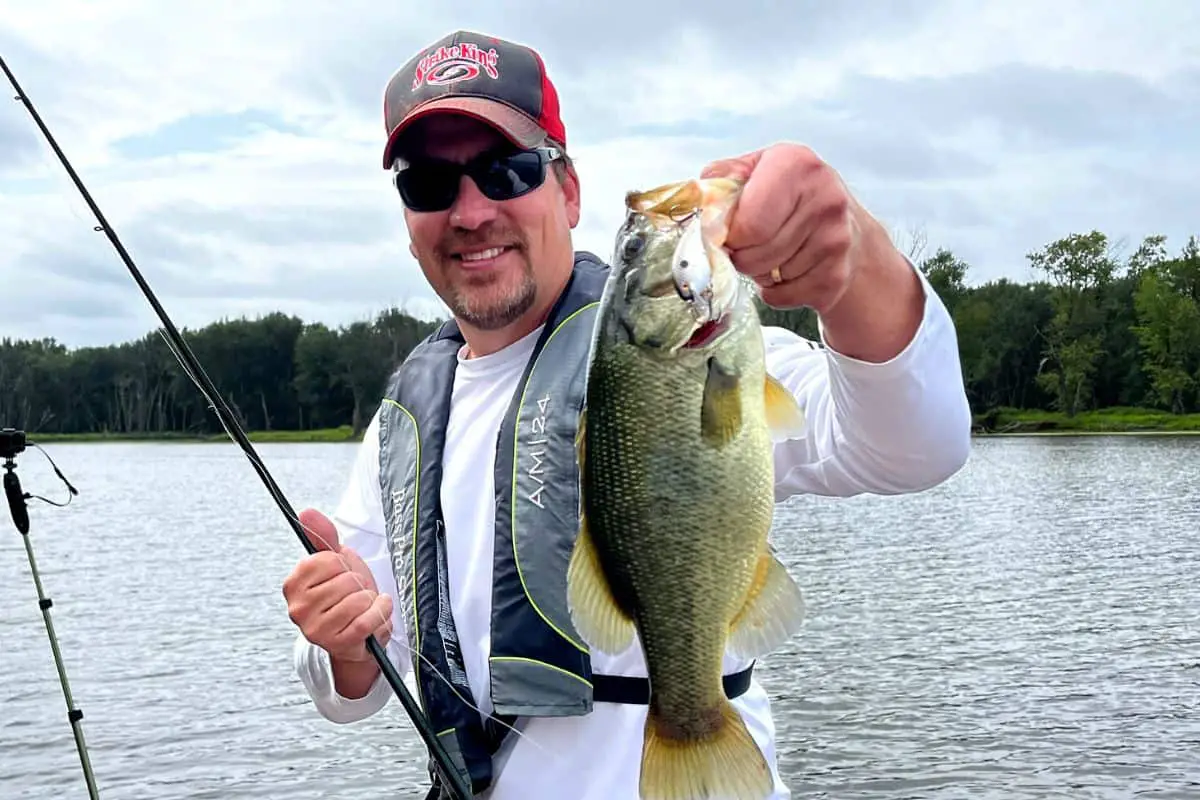Crankbaits catch a lot of bass, but keeping them on the hook and actually landing the fish can be a challenge. Especially for new crankbait anglers.
To secure bass when crankbait fishing anglers need to use a proper crankbait rod, adjust the drag to allow fish to run, and utilize a side sweep hookset.
The following steps will help you land many more bass when crankbait fishing.
The Nature of Treble Hooks and Crankbaits
There are two types of hooks used by anglers – treble hooks and single-point models.
Lures and presentations that use a single-point hook are considered penetrating hooks. These hooks, especially lightwire versions, can push clear through the lip of the bass.
Treble hooks, while they can penetrate, are best described as a “grabbing” hook. With this understanding of what a treble does helps us to make the proper adjustments needed to land more bass when using crankbaits.
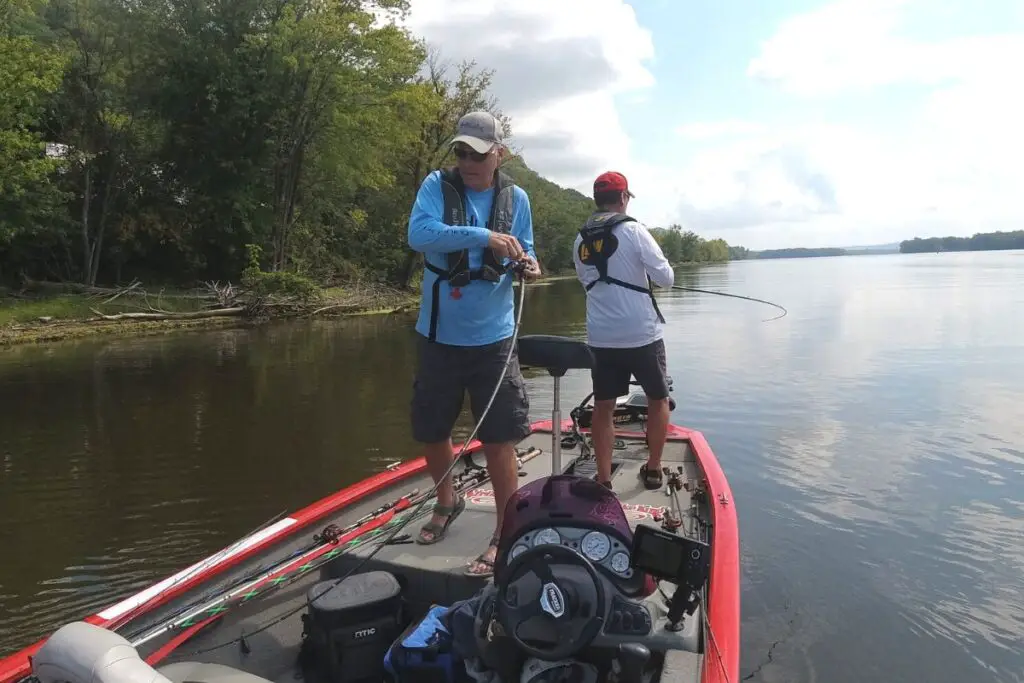
The Right Hookset for Crankbaits
There are two types of hooksets in the bass fishing world.
Straight overhead, or vertical, and a side sweep.
Crankbaits are considered a horizontally presented lure therefore a side sweep hookset is the best. It keeps the lure in-line with the hookset and doesn’t drastically change the direction of the bait.
When using crankbaits, an overhead hookset can change the angle of the lure giving the bass the opportunity to slip or pull free.

As far as the strength utilized on the hookset, just maintain pressure. Lures with treble hooks do not require the penetrating power that a single hook lure needs. The side sweep will keep pressure and maximize the potential to land the fish.
(Here is an article that discusses why fish may pull free using other presentations.)
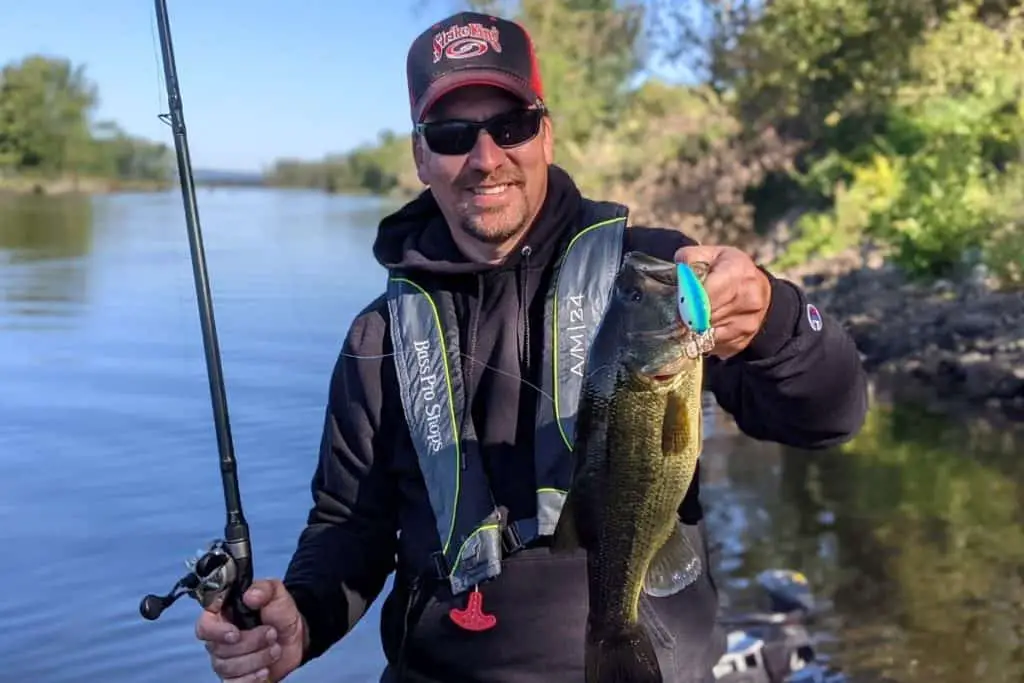
Using a Proper Crankbait Rod Will Drastically Increase Success
This is a common issue for crankbait anglers – especially as they progress through the complexity of the sport and dive into more advanced techniques.
Most crankbait rods on the market today are composite. In other words, they are a blend of carbon fiber (graphite) and fiberglass. The result is a rod that is less sensitive.
I know that sounds counterintuitive, but composite rods that are less sensitive than ultra-light graphite rods help us delay our hookset. It is easy to rip the crankbait right from the mouth of the bass. If the rod is too sensitive we react too soon.
A crankbait rod, because of its material makeup, is much more parabolic. This natural give allows the angler to maintain pressure without yanking the lure free. The rod wants to flex and give with the bass, yet maintain tension.
Let’s say an angler was using a medium-heavy graphite rod that is better suited for flipping jigs. When they fight the fish or let it run, the stiffer power of the rod results in the crankbait slipping and pulling free. We can often feel when the fish pulls loose of a hook or two and it falls back on the lure. True crankbait rods reduce this problem exponentially.
The parabolic action also gives an angler much more whip when using crankbaits that require extra long casts. Deep divers are a perfect example of this. Crankbaits that run deep in the water column are only in the optimal zone for a short time. The dive down and the lure path back towards the angler reduce the distance where the crankbait is where we want it to be.
The remedy is extra long casts. True crankbait rods let us make long casts and cover more water in the proper zone.
(Here is an article that talks about the right gear ratio for fishing crankbaits.)
What I Often Hear When Discussing Crankbait Rods
When working retail events around the country, I will often get into a conversation with a customer when looking at rods.
Most folks cannot afford to have thirty rods laying around tailored to specific techniques. They will ask me what is a good all-around rod.
This is tough.
A great jig rod is a terrible crankbait rod and vice-versa. If I were to pick one rod that would cover the widest range of applications, including crankbaits, I would go with a graphite medium-heavy power-rated rod with a moderate action.
The key is the moderate action. This will help anglers mimic the parabolic action a true crankbait rod has. But, if an angler can afford it and loves to fish crankbaits, buying an actual crankbait rod will be a worthwhile investment.
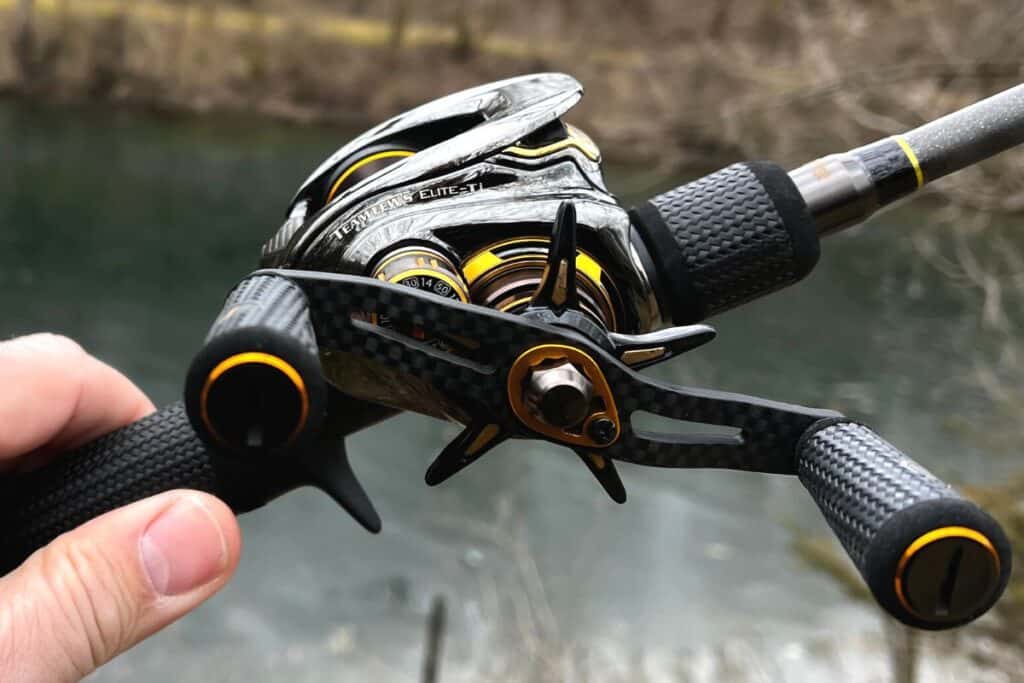
The Proper Drag Setting When Using Crankbaits
Let’s start with a couple of crankbait nightmares I will never forget.
Each involved tournament fishing. One event was on Kentucky Lake and the other was on Table Rock Lake.
In each situation, I had the drag set too tight for crankbait fishing. A huge bass was on the line in both situations and unlike smaller fish, these beasts had the stamina and strength to run. The amount of pull they imparted on the lures was incredible. Being a novice tournament angler at the time, I failed to recognize the drag issue until it was too late.
The fish came off in both situations and left me frustrated. It was all my fault and I do my best to always be aware of the drag when fishing with crankbaits.
What is a Good Drag Setting?
Saltwater anglers use weights and scales to adjust their drags to precise measurements.
Most bass anglers do not need to be so precise because we are not catching fish that can weigh hundreds of pounds.
Anglers will often grab the line with one hand and pull it away from the reel. When they feel the line give smoothly and evenly, they will consider that a good starting point.
In recent years, I have taken a slightly different approach. I like to have someone grab the line while standing a distance from me and pull. This more accurately imitates how a bass will be applying pressure. I feel I can set the drag more precisely in this manner.
No matter which method you use, be aware that you may need to loosen the drag while in the middle of a battle with a big bass. Slack is a crankbait angler’s enemy. Let the fish run while pulling the line at a steady and even pace.
This is another reason why having a rod and reel that is dedicated to crankbait fishing is a good idea.
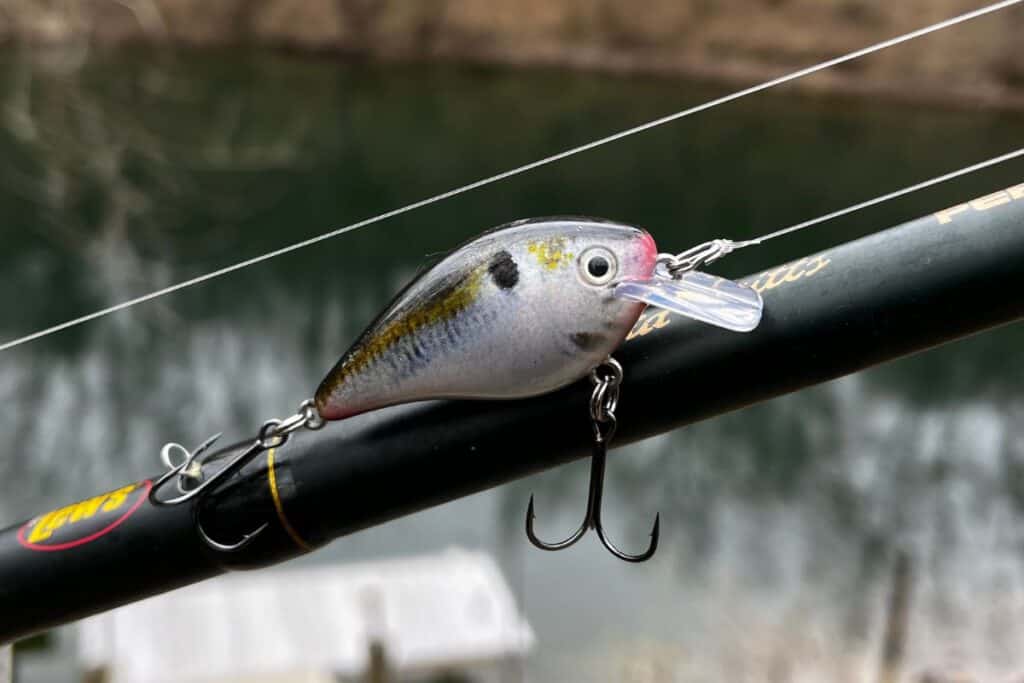
Best Line for Crankbait Fishing to Help With Hooksets
Die-hard crankbait anglers will use fluorocarbon line. It is almost invisible, is very abrasion resistant, and has a little stretch. It also is denser than monofilament so it will sink.
This helps the lure to achieve greater depths and maximize its reach. My favorite pound test is anywhere from 10 – 15lbs.
If you are using a graphite rod for your crankbait fishing and it doesn’t have as much parabolic action, then I would suggest using monofilament.
Mono has a lot of stretch and it will help anglers with the cushion needed to keep the bass from pulling off the treble hooks.
Good luck with your crankbait fishing and make sure to encourage someone today. You never know how you may change their life forever.
Isaiah 6:8

